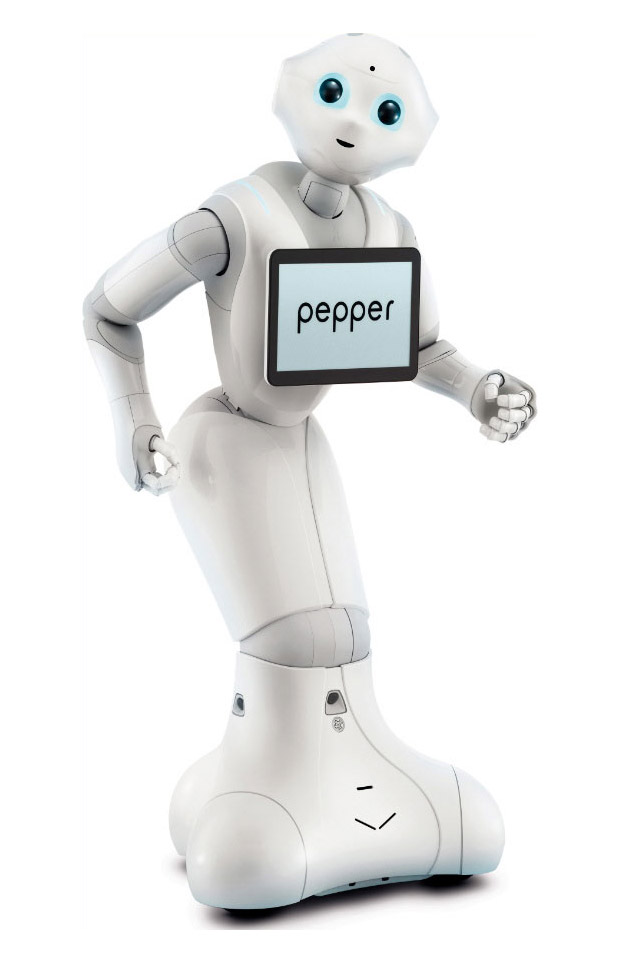Brisk sales for Pepper, but Romeo is primed to be the first hit humanoid


The quick sales suggest a hot consumer market for humanoid assistants, and SoftBank, which debuted Pepper as an in-store assistant in its retail stores about a year ago, has plans for an enterprise version as well (read more). But the real opportunity for this technology lies elsewhere. Pepper was developed for SoftBank by Aldebaran, a robotics company specializing in emotionally intelligent humanoids that can function in unstructured environments like homes, shops, and, importantly, specialized care facilities.
"Currently, our Romeo project is focusing on the elderly," Rodolphe Gelin, head of cooperative projects for Aldebaran, tells me over the phone, referencing an ongoing project to develop advanced systems that can work in elder care facilities. "It's just a huge market."How huge? Rival robot-maker GeckoSystems estimates that the available market size in dollars for cost-effective, multi-tasking elder care robots is currently $74B, and that it will top $86B by 2019 (source).
Robotics
Like many robotics companies working in AI and machine learning, Aldebaran has been developing its technology while simultaneously exploring market opportunities and waiting for others to emerge. The decision to create humanoid platforms was motivated by the hypothesis that bots with anthropomorphic features would be better equipped to negotiate spaces designed for humans than non-anthropomorphic systems (NASA has taken a similar approach with its Robonaut project). Just which spaces Aldebaran's machines would be negotiating was a bit of an open question, even as the first robots were being assembled.
The company debuted its NAO humanoid in 2006 and found early customers through the Robot Cup, an international competition in which engineers and developers field teams of soccer playing bots. "It was a good way to present NAO to the scientific community," recalls Gelin, "even if it wasn't ready for the domestic market." But soccer playing roboticists are a pretty niche market, and as Aldebaran continued development of NAO, it began looking for new ways to distribute its technology. By 2008, NAO was available as a platform for researchers and educators. "We invented that market," says Gelin. So far 7000 units have been sold.The partnership with SoftBank began in 2012. The mobile phone retailer wanted a cute, emotionally intelligent robot to interact with customers at stores. Development took two years and Pepper reported to work in 2014. In the months since, Aldebaran has upgraded key hardware features, such as the camera and mic systems, and has improved the robot's reliability.
"You can drop it from its own height 3000 times, and it will not break," says Gelin.
Aldebaran has also used the data from its in-store bots to refine Pepper's emotional intelligence, a humanistic way of describing a machine's ability to recognize and interpret the physical symptoms of emotion, such as facial and voice cues. The company's decision to create robots with a human-like shape may have been motivated largely by a desire to see the machines interact with the unstructured spaces where humans live and work, but it has been reinforced by the powerful effect created when a humanoid accurately interprets the way a person feels and then exhibits contextually appropriate responses.
Which brings us back to the $74B elder care market. Since 2009, Aldebaran has been testing a humanoid it calls Romeo in elder care facilities around the world. "When we showed up at retirement centers," says Gelin, "people there would say, 'Are you crazy? We want real people, not robots.' But then we present Romeo, and it's so cute, so interactive, that people want one of their own. It was proof we made good choice. Shape makes all difference."Romeo has three operating objectives. The first is to ensure that the people it interacts with are safe. "Have they fallen down? Have they taken their medicine?" says Gelin by way of example. The second objective is to facilitate social interaction. "This is paradoxical, because we think of robots as perhaps interfering with our normal relationships." Romeo reminds people of appointments and can remember people's interests and then suggest introductions between strangers who have similar likes and dislikes. Finally, Romeo, which is tall enough to open doors, climb stairs, and grab objects off of tables, is able to offer physical assistance on day-to-day tasks.
At present, says Gelin, Romeo has very basic functionality, which is why, for the time being, Pepper is grabbing all the headlines. But the consumer market is already crowded with intelligent personal assistant systems, most of which are not humanoids, and it's unclear how low the ceiling will be for a home version of a robot like Pepper. In the meantime, Aldebaran will be using the data that emerges after Pepper has gotten a trial run in homes and at shops to refine its elder care product, which looks like the company's best bet for a blockbuster.